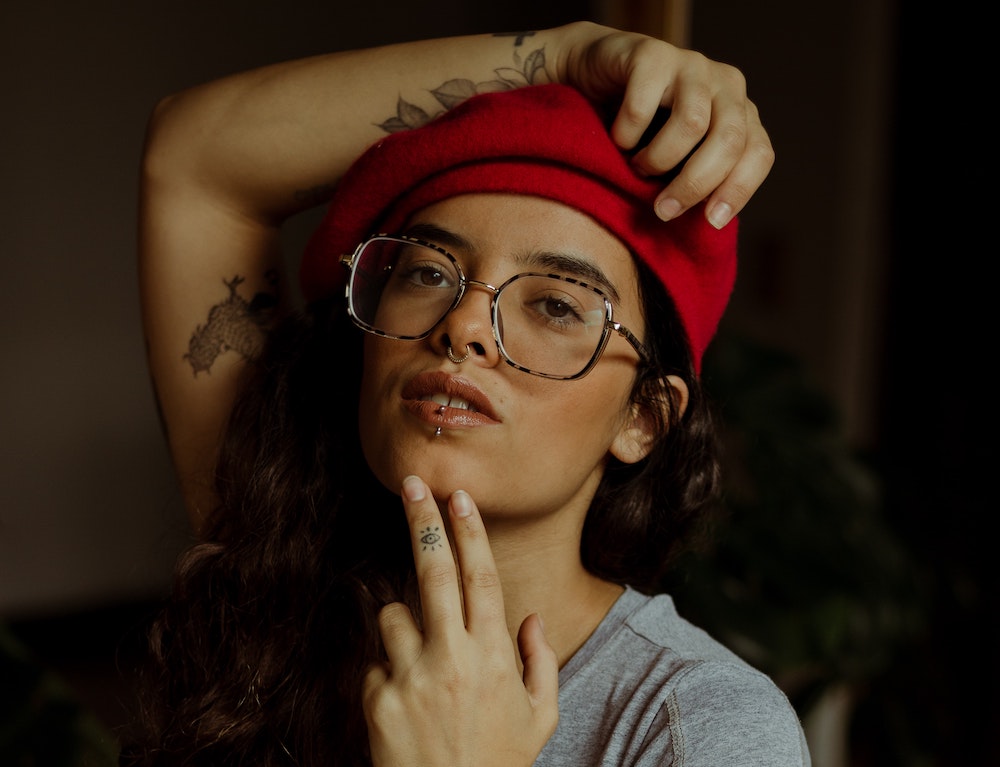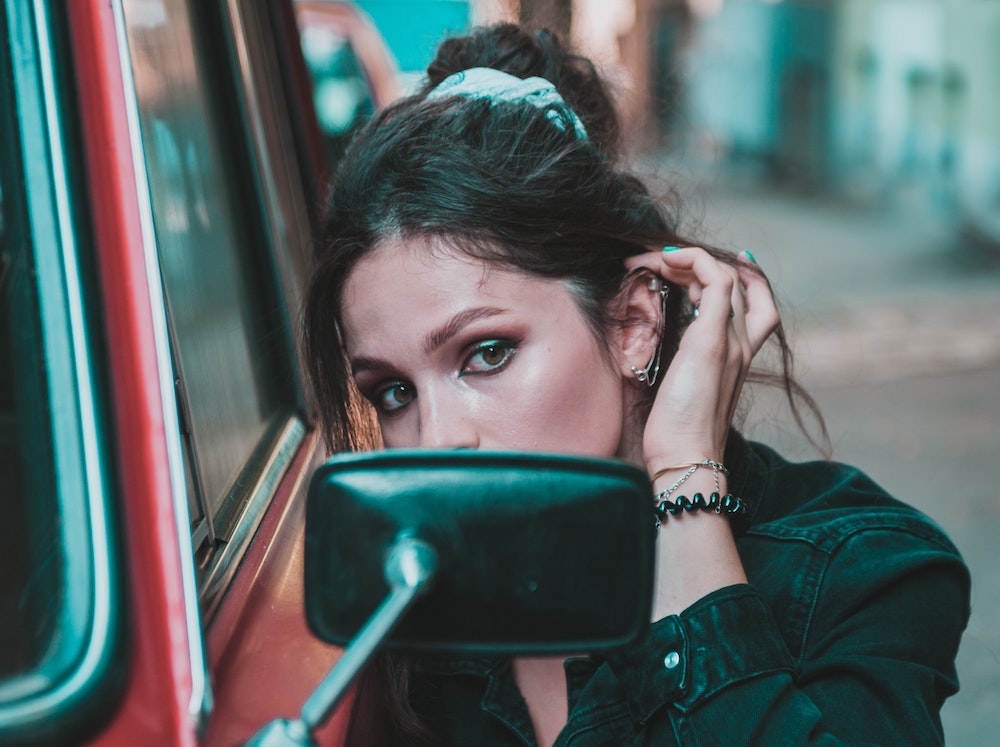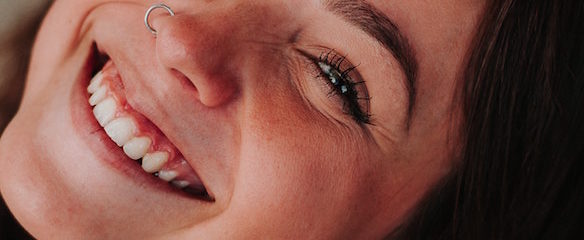What are Piercing Bumps? Causes, Treatment, and Prevention May 19, 2021 – Posted in: Piercing Advice – Tags: avoiding piercing bumps, keloids, piercing bump care, piercing bumps, piercing bumps treatment, piercing care, piercing keloids, piercings aftercare, what is a piercing bump
Piercing bumps highlights:
- Piercing bumps are small bumps that appear on or near the piercing during healing.
- Before trying any at-home treatment, visit your piercer for consultation.
- Most piercing bumps go away on their own over time.
It’s a fairly common phenomenon: you’re in the midst of your aftercare process, cleaning your piercing daily, keeping it as safe as you can, and suddenly, a small bump appears. And stays. What are you supposed to do?
Piercing bumps can appear in any piercing, but they most often appear in ear and nose cartilage due to the longer healing period. Although they can appear for a number of reasons, sometimes, they just happen.
It can be a little scary when you see a bump or bubble forming around your new piercing, but the good news is that it will likely go away on its own over time. Your best bet against piercing bumps is to properly care for your piercing, keep your piercing dry, and avoid snags.
Let’s dig a little deeper. Here’s what you need to know about piercing bumps.

Photo by Maria Luiza Melo
What are piercing bumps?
Piercing bumps are as the name implies: small bumps or bubbles that form around your piercing.
There are different types of bumps, some more common than others. While this guide can help you determine the type of bump you’re experiencing, you should visit your local professional piercer. Piercing bumps can be tricky to identify, and it’s best if you seek professional guidance.
Hypertrophic scarring
These are some of the more common piercing bumps. It occurs when too much collagen—foundational tissue—is produced during healing. Manifesting as a small bump or raised line on or around the piercing site, it can appear on either the front or back of the piercing. These bumps are typically painless, and they are usually red or pink in color. As they age, they will turn white, like other types of scar tissue.
The good news about hypertrophic scars is that they are unstable scars—they’re not permanent. As it heals, you’ll likely see a change in size. Eventually, it should go away on its own.
Hypertrophic scarring can be a natural side effect of healing, but more often than not, hypertrophic scarring is triggered by something.
- Trauma (whether accidental or intentional)
- This includes snagging the jewelry on clothing, rolling onto your piercing while sleeping, twisting the jewelry, picking at crusties, using improper products, or overcleaning your piercing.
- Choosing the wrong jewelry
- If your jewelry is the wrong size or made from the wrong materials, it can contribute to hypertrophic scarring. Make sure that your initial jewelry adheres to APP standards, and talk to your piercer about downsizing to a smaller piece after your swelling has gone down.
- Changes in personal health or environment
- When your body is healing a wound, its immune system kicks into action. If you develop a cold or start experiencing high levels of stress or hormone changes, it will affect your body’s ability to heal. Additionally, changing climates and altitudes can affect your body, including the skin around your piercing.
- Piercing placement
- Piercings that are perpendicular to the tissue that it is going through generally heal best. If your piercing was done at an incorrect angle, it increases your risk of complications. For this reason, be sure to find a reputable piercer who will pierce you correctly and who will also tell you if your anatomy is not suitable for a particular piercing.
Pustule
These pimple-like bumps can happen when dirt and debris get stuck beneath the skin. This causes a small blister next to the piercing site. You might be tempted to pop it, but it’s best to let it drain on its own; popping it could cause trauma to your healing piercing.
Keloids
Keloids are highly misunderstood stable scars that are incorrectly listed as common piercing bumps. Although keloids can appear in piercings, they’re actually a genetic condition that causes large bumps in any injury. Keloids are also quite massive, rare, and only appear on fully healed wounds, so if you have only a small bump next to your healing piercing, it’s more than likely not a keloid. If the bump fluctuates in health or size, this is another sign you are not experiencing a keloid, but rather hypertrophic scarring (which is not permanent).
By itself, a bump on your piercing doesn’t mean your piercing is infected. True infections in body piercings occur infrequently. Many times, the piercing is just irritated and requires changes in jewelry or adjustments in care. If you’re unsure, visit your doctor. They will be able to tell you what is happening and the best treatment options.

Photo by Roman Tymochko
How to prevent piercing bumps
After you’ve spent months healing your adorable new piercing, the last thing that you want is a massive, unsightly bump overshadowing your jewelry. Luckily, the vast majority of irritation bumps can be avoided with proper aftercare.
Avoid piercing bumps with a few easy tips:
- Keep your piercing clean and free from infection using proper piercing aftercare products. You should clean it 2 – 3 times daily.
- Make sure that your jewelry is the right size. Jewelry that’s too small will press against the healing piercing, leading to embedding, rejection, and other complications that could cause bumps and scars. Jewelry that’s too large can snag on your hair and clothing, which could traumatize the piercing site.
- Choose jewelry made from materials that won’t irritate your skin. Implant-grade titanium is the most popular starter jewelry material because it’s cost-effective and hypoallergenic.
- Keep up with aftercare practices for the entire duration of healing. Your piercer must confirm that your piercing has fully healed before stopping aftercare practices. Some piercing areas, like cartilage, will take some time to heal—it could take 6 months or even longer—and during that time, you will be susceptible to developing piercing bumps.
- Never use products that are unsafe for piercings on or near the piercing site. This includes shampoo, hairspray, and lotion. When you shower, try to keep suds away from the piercing, and fully rinse, clean, and dry the piercing once you’re done showering.
How to get rid of piercing bumps
Once you’ve gotten a piercing bump, it is possible to get rid of it, but you must be prepared to dedicate some time, especially if you’ve developed a hypertrophic scar.
Make sure to continue cleaning the piercing with piercing aftercare saline solution 2 – 3 times a day.
If you’re experiencing hypertrophic scarring, simply give it time. The scar will eventually go away on its own as long as you continue proper aftercare.
If you’ve developed bumps due to skin irritation, have your piercer switch out your jewelry to a hypoallergenic material, and make sure that you’re keeping harmful chemicals away from your piercing.
The best thing that you can do for a piercing bump is visit your piercer for consultation. They will provide advice specific to your issue.
Piercing bumps can be an annoyance, but they won’t be permanent. If you want to get a piercing, but you’re afraid of developing the dreaded bump, your best chance against them is to practice proper aftercare throughout the entire healing process. If you’ve already developed a piercing bump, talk to your piercer about aftercare, and know that it will go away in time.







